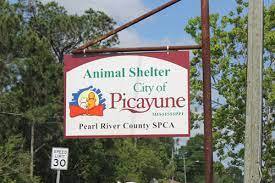Nearly two years later and the devastation remains along the Coast
Published 2:34 pm Wednesday, May 30, 2007
On Memorial Day, Genie and I drove from Picayune towards our favorite place in Waveland to set out our crab nets as I would try to catch a few fish.
We didn’t carry crab nets or fishing gear with us on Monday. Our purpose was to take another of our periodic looks at the devastation, to see what has changed.
Actually, little appears to have changed for many of the residents of the area. We know some things have changed. There are a lot of new businesses along the road we take from Miss. 603 to our crabbing place along the Waveland seawall.
A shopping center that contained two restaurants we patronized before Hurricane Katrina appeared to still be closed, or at least mostly so.
The restaurants weren’t there, but there were a few signs up on the façade. Whether they remained from before the storm or were recently put there, I don’t know. The only two businesses we were familiar with in the place were the restaurants. The parking lot was deserted, though, and the place looked sad.
As we continued down the road, we saw structures spray painted with the message that they were to be demolished. We saw some other places that appeared to be abandoned and others that obviously had been rebuilt since our last visit.
We couldn’t get through to our crabbing spot though. Immediately after we crossed the railroad tracks, we noticed the road we normally take was blocked by machinery. No surprise. The damage we had seen remaining from the storm thus far was still extensive, which indicated to us that what lay before us was even worse, just as it had been right after the storm.
We took the road to the right. We had not taken it before and didn’t know where it would end up. Well, we couldn’t get to the beach road, though there was a turn to the right. We decided to back track to the road that paralleled the railroad tracks.
From there, we turned right on to the road that leads by some friends’ house and by St. Clare’s Catholic Church, which we found still in temporary quarters. With our landmarks all gone, we couldn’t spot our friends’ house, though we had been assured it was still there.
Once on the beach road, we turned left away from our crabbing spot near Buccaneer Park. Our trip was a pilgrimage to see how much had changed — and how much hadn’t.
The only thing that appeared to be the same was the popularity of the beach. It was crowded. We saw a few new houses built high on stilts that the owners hope will help them survive the next blow.
Those homes were built well back from the beach as the stilts on which earlier homes had been built still rose from the ground in front of the new homes, akilter this way and that — topless — as mute reminders that sometimes high isn’t high enough.
No landmark structures remained, but we concentrated to try to learn some new ones.
As we rounded the bend climbing towards the bluff in Bay St. Louis that proved not to be high enough either, we saw the new bridge from Bay St. Louis to Pass Christian soaring in its sweep up and over the water. It looked pretty and graceful, not pedestrian as the old bridge had appeared, but I still miss the old bridge.
As we passed along the bay front in Bay St. Louis, on the new road — we wonder is it temporary to be replaced with something better, or is it permanent — we continued to be stunned by the damage. Actually, we are stunned by the amount of remaining damage every time we make the trip.
This time, though, we could drive across the bay on the beautiful new bridge. It takes a few more turns to get to the foot of it than the old bridge, but we were able to drive across the bay to Pass Christian. That was nice.
I strongly suspect the new bridge, especially when it is finished, will attract some of the artists who show in the galleries in Old Towne Bay St. Louis. It is such an attractive thing, rising there in graceful curves across the water, that I fully expect that I will soon see artists’ interpretations of it in the galleries.
The bridge is at one and the same time a representation of how much damage was done and what could be a beautiful renewal growing out of the destruction from Hurricane Katrina.
The secret will to be not to let the new overwhelm what remains of the old — especially of the people who were there when the storm blew through and who remain — with a lot of glitz and glitter.
If the bridge proves to be a representation of that spirit and helps it to remain and grow stronger, then one day the Mississippi Gulf Coast, especially this small part of it, will return to its glory as a place for independent individuals and artists.




